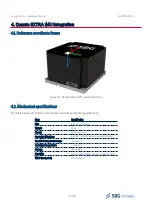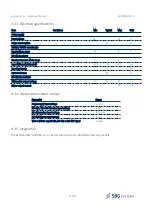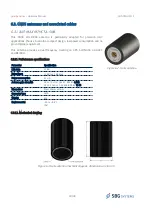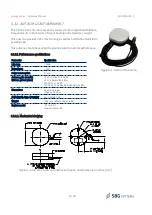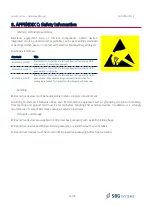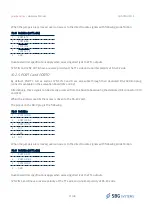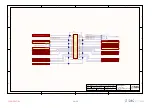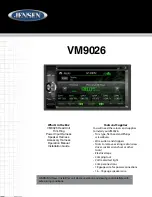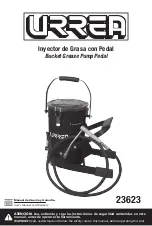
Quanta series
– Hardware Manual
QUANTAHM.1.2
●
Jumpers between X6 and X7 on position 1 and 2: Internal power supply
●
Jumpers between X6 and X7 on position 3 and 4: External power supply. Apply Quanta power supply at XY
pin 1 or 2.
10.2.2. Ethernet
Ethernet interface is accessible through the standard RJ-45 connector (X5).
10.2.3. PORT A
By default, PORT A, SYNC IN A and SYNC OUT A are accessible through the USB micro connector available on the
evaluation board (X11).
Alternatively, these signals can be directly accessed from the Quanta board using the dedicated DIL connector
(X9).
When the jumpers are ON, the access is driven to the USB port. When the jumpers are removed, user can access to
the direct Quanta signals with following pin definition:
Pin # Definition (at TTL side)
1
PORT A TX
2
PORT A RX
3
SYNC IN A
4
SYNC OUT A
5
GND
Quanta electrical specifications apply when accessing directly at the TTL outputs.
Note: Unlike the other SYNC IN / OUT signals, the SYNC IN A and SYNC OUT A polarity is inverted when
accessing to the direct TTL version, AND their corresponding USB behavior. Other ports have a reversed
polarity in TTL and a normal polarity in the RS-232 DB9 connector.
10.2.4. PORT B
By default, PORT B, SYNC IN B and SYNC OUT B are accessible through the dedicated RS-232 DB-9 plug (X
connector available on the evaluation board (X12).
Alternatively, these signals can be directly accessed from Quanta board using the dedicated DIL connector (X8).
When the jumpers are ON, the access is driven to the RS-232 port. The pinout on the DB-9 plug is the following:
Pin # Definition
1
SYNC IN B
2
PORT B RX
3
PORT B TX
4
SYNC OUT B
5
GND
6-9
N/C
36/48


